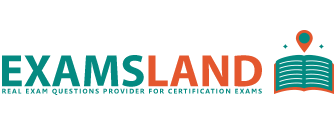Free Certified Tester Test Automation Engineer Exam CT-TAE Exam Practice Test
CT-TAE Exam Features
In Just $59 You can Access
- All Official Question Types
- Interactive Web-Based Practice Test Software
- No Installation or 3rd Party Software Required
- Customize your practice sessions (Free Demo)
- 24/7 Customer Support
Total Questions: 79
-
A project consists of distributed teams working in a 24-hour environment, where activities happen at all hours of the day. This project adopts a CI (Continuous Integration) process when developer check-in code and consists of automated activities that include generating a build and deploying it to a test environment. Automated integration tests are run multiple times a day. The project have asked for a report containing the automation test results for every build, which must be available 24/7 to the project team. Which of the following would be the BEST way to automatically provides this report?
Answer: A Next Question -
You have executed an automated test suite for a product that was released into production. Although all the tests passed, there was a major failure in production in an area that was covered well by your automated tests. You have run the automated tests again and one of the tests is now failing and this is directly related to the production defect that was raised. You decide to run the automated test suite again on the same version of the SUT and the test now passes. What SHOULD you do now to verify the validity of the automated tests?
Answer: A Next Question -
You are working as a TAE for a company who have been using a web test execution tool for a number of years. The tool has been used successfully on ten web applications in the past. The company are developing a new web application which has a friendly User Interface, but the developers have used an object throughout the application which the tool is unable to recognise. As a result, you have no way of capturing the object or verifying the contents using the automation tool. What is the first thing you should do about this problem?
Answer: B Next Question -
What are the four horizontal layers of the gTAA?
Answer: C Next Question -
You are testing a major enhancement to an air traffic control user interface. You have use of a sophisticated pre-production test environment, created specifically for large scale automated regression, performance and security testing. The window for regression testing is limited and must successfully conclude, with no major regressions remaining, before the non-functional testing starts. You have been using the same version of the TAS for the last few releases, each time completing the automated regression test suite in a single overnight run. However, due to the latest enhancements for the SUT, you believe there is a risk that the test suite may no longer complete overnight and therefore delay performance and security testing. Which option would be the BEST and MOST cost-efficient approach to mitigate this risk?
Answer: A Next Question -
Consider the following layers of the gTAA structure: a. Test generation layer b. Test definition layer c. Test execution layer d. Test execution layer Consider the following capabilities associated with these layers. Acquire all the necessary resources before each test and release all after run, in order to avoid interdependences between test Allow the automated test scripts on an abstract level to interact with components, configurations and interfaces of the SUT. Design test directives that allow configuring the algorithms used to automatically produce the test cases a given model of the SUT. Allow the definition and implementation of test cases and data by means of templates and/or guidelines. Which of the following BEST matches each layer with the appropriate capability?
Answer: C Next Question -
Which of the following statement about the implementation of automated regression testing is FALSE?
Answer: D Next Question -
Consider A TAS for testing a desktop application via its GUI. All the test cases of the automated test suite contain the same identical sequences of steps at the beginning (to create the necessary objects when doing a preliminary configuration of the test environment and at the end (to remove everything created –specifically for the test itself during the preliminary configuration of the test environment). All automated test cases use the same set of assertion functions from a shared library, for verifying the values in the GUI fields ( e.g text boxes). What is the BEST recommendation for improving the TAS?
Answer: A Next Question -
You have been asked to develop test automation for a legacy system that is going to go through a series of infrastructure migrations. The scripts will be used to verify basic functionality during these infrastructure changes Your Test Analysts have some programming skills and need a solution that is simple and fast. Maintainability of the scripts is not a consideration because no changes to the software are anticipated. Which of the following is the BEST scripting approach in this situation?
Answer: B Next Question -
Consider a TAS that uses a keyword-driven framework. The SUT is a web application and there is a large set of keywords available for writing the automated tests that relate to highly specific user actions linked directly to the GUI of the SUT. The automated test written with the keywords are statically analyzed by a custom tool which highlight’s repeated instances of identical sequence of keywords. The waiting mechanism implemented by the TAS for a webpage load is based on a synchronous sampling within a given timeout. The TAS allows checking a webpage load every seconds until a timeout value
Answer: C Next Question
Total Questions: 79
